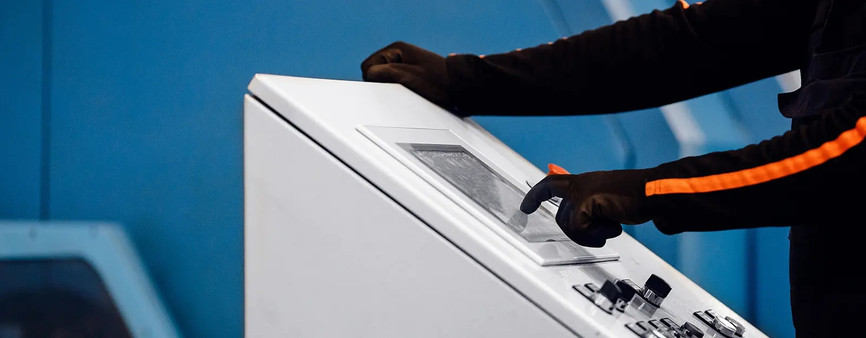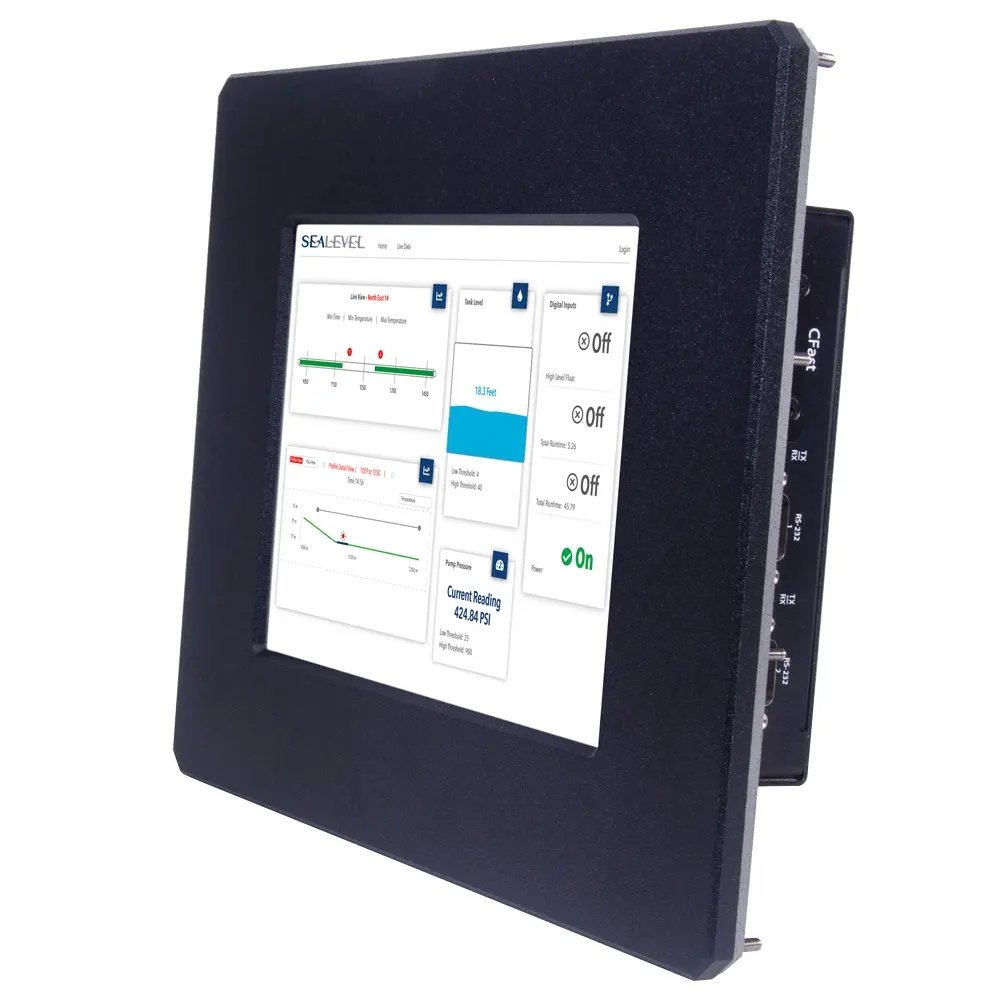5-Wire Resistive Touchscreens for Rugged Panel PCs

Enclosure design, component selection and placement are vital industrial engineering techniques. However, in the case of rugged touch panel PCs, the touchscreen itself moves quickly to the forefront. Engineers and manufacturers often rely on resistive touchscreen technology to meet the extreme demands for these hazardous area touch panel PCS.
What are Resistive Touchscreens?
Resistive touchscreens are made of two flexible layers, often glass or polyethylene terephthalate (PET). These layers are separated by an air gap and held apart by spacer dots. Each layer has a coating of indium-tin oxide (ITO). When pressure is applied to a resistive touchscreen, the ITO coatings make contact and register touch input.
Because of the way touch is registered and the reliance on pressure, a gloved finger or stylus can be used to operate resistive touchscreen devices. This makes panel PCs with resistive touchscreens ideal for hazardous environments where protective clothing is required. Resistive touchscreens are also less costly than capacitive touchscreens (commonly used in smartphones and tablets) and are more resistant to dust and water.
4-Wire Versus 5-Wire Resistive Touchscreens
Resistive touchscreens commonly come in 4- and 5-wire variants. In a 4-wire configuration, a pair of electrodes exist on each upper and lower ITO layer. When the layers come in contact, an electrical current is created, registering touch input. In a 5-wire configuration, all four electrodes exist on the bottom layer. A fifth wire on the top layer measures the voltage from the electrodes when the top and bottom layers make contact.
With the electrodes all situated on the bottom layer, they are more protected than in the 4-wire configuration. A 5-wire resistive touchscreen is more likely to work properly even when the top layer is damaged, making it the more durable variant. While 4-wire resistive touchscreens are less costly, 5-wire configurations can handle more rugged environments and operate more reliably for a longer period of time.
The HazPAC 10 Rugged Panel PC’s Touchscreen

Sealevel’s HazPAC 10 Rugged Panel PC features a 5-wire resistive touchscreen that is waterproof and impervious to flames, chemicals and solvents. The surface is also abrasion and scratch resistant, improving reliable performance in control and HMI applications. With 8.4” and 15” touchscreen options, the displays feature an LED backlight to improve visibility. Beyond the touchscreen’s durability, the aluminum front bezel maintains NEMA 4/IP 64 protection from sprayed liquids and the bezel is sealed against dust and dirt. And with its Class I, Division 2 (Groups A, B, C, D, T4) rating, the HazPAC 10 is appropriate for environments where flammable liquids or gases are handled and processed.
While consumers are most directly familiar with capacitive screens that rely on the human body’s conductive properties, resistive technology remains at the forefront of industrial computing design. Resistance to environmental extremes as well as the ability to manipulate while wearing protective clothing ensure that a resistive touchscreen can meet the demands of industrial – and sometimes hazardous – environments.
For more information about rugged touchscreen computers, visit these resources:
HazPAC 10 Rugged Panel PC
Touch Panel Computers
Tardigrade Tough NEMA-Rated Touchscreens
Categories:
